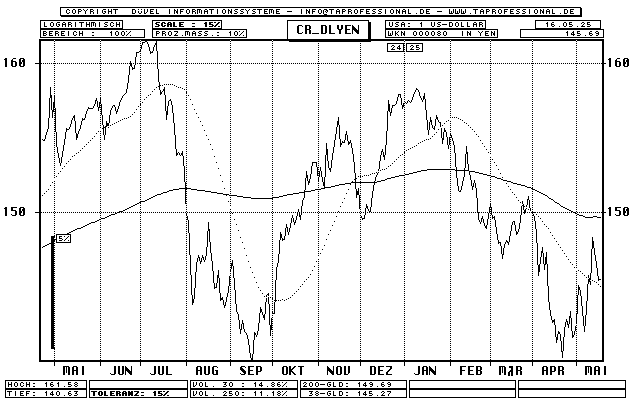Over the last five or six years major Wall Street Firms, Money Banks, and Hedge Funds have made money hand-over-fist from a little publicized trading system. The trading system, called Carry Trades arbitrage the difference in interest rates between various countries. In it investors borrow money from a country with low interest rates and then invest it in higher yielding bonds or other investments. The spread between the borrowed money and the return on the higher yielding assets it profit. There is a significant Carry Trade using Japan and Switzerland as lending countries. Analysts estimate that Japan alone may have as much as $1 trillion at play.
Here an example of how a Carry Trade might work:
- A trader borrows money from a Japanese bank at 1% interest. Japan has traditionally had a low interest rate.
- The trader invests the money in a bond in a higher interest rate country paying 5%.
- The trader has a profit spread of 4% or 400 basis points which is applied to however much money is sunk into the trade. The more leverage the trader uses, the higher the return.
Over the last ten years, borrowed money has gone into many different types of investments, including mortgage backed securities and specifically sub-prime mortgage backed securities.
There are several risks to a Carry Trade.
- The lending country could raise their interest rates, squeezing the profit margin and forcing the trader to either earn a higher return or cash in their bonds. If everyone rushes to cash in their bonds at the same time, the value of the bonds will drop and if the rush is big enough, it could trigger a wider asset crash.
- Currency exchange rates can change. If the lending country's currency appreciates in value, the trader will have to pay more interest on the loan, reducing the profit margin.
Taken together, a rise in lending country interest rates accompanied by an appreciation in that country's currency, would cause a lot of pain to these highly leveraged positions. Traders and investors would have to sell their assets in order to cover their loans, and the sale of assets would depress their prices and lead to a fire-sale. At its worst, the contagion could spread, dragging down all asset classes.
Now, let's look at what's been happening.
- Japanese interest rates have risen over the last year. Japan is one of the largest lending countries.
- The Yen is one of the few currencies that the dollar has actually strengthened against over the last year. Many speculate that this is because of direct intervention of both central banks. But currency rates can fluctuate wildley and over the last two weeks, the dollar has declined dramatically in value versus the Yen.
- The value of sub-prime mortgages have evaporated as homeowners have begun to default on their loans. There is some indication this is now spreading to higher grade mortgage backed securities.

Image from YenChart.com
This dynamic squeezes trader profits by making it more expensive to borrow funds from Japan or repay existing loans. Some traders may have to cover their lending by selling their assets (the investments they put the borrowed money in). If an investor put their money into mortgage backed securities, they could run into problems as this market has lost significant value over the last couple of weeks. If an investor can't get enough money out in time to satisfy their lenders, they have to liquidate at a loss.
The high-profile demise of several Bear Stearns Funds as well as the Hedge Fund Sowood Capital shows this dynamic in action. Investors and bankers are holding their breaths, praying that the mortgage market doesn't melt down further and that it doesn't spread to the other lending markets. They are also praying that the dollar doesn't drop further and that Central Bankers will continue to keep the Yen depressed.
How this will all play out is anyone's guess but there are powerful forces at play in the global economy that no one can control.





Comments
t6675
August 03, 2007
Never heard of carry trades before. Thanks for the info.
Is this review helpful? Yes:0 / No: 0
Rob Davis
August 04, 2007
Very interesting. Thanks for posting.
Is this review helpful? Yes:0 / No: 0
Shellyter
August 15, 2007
I've never heard of carry trades before. Based on your chart though, it looks like the Yen has actually lost value versus the dollar for most of the year.
Is this review helpful? Yes:0 / No: 0
TJT1191
August 16, 2007
The Yen ticked higher today. It is highly possible that the carry trade liquidation could become forcible and not orderly as it has been until now. If this happens, look out below ...
Is this review helpful? Yes:0 / No: 0
RobMinton
August 16, 2007
Great article - the carry trade is indeed coming apart right now and will be discussed more as we now hit the next leg down.
Is this review helpful? Yes:0 / No: 0
Add your Comment
use your Google account
or use your BestCashCow account